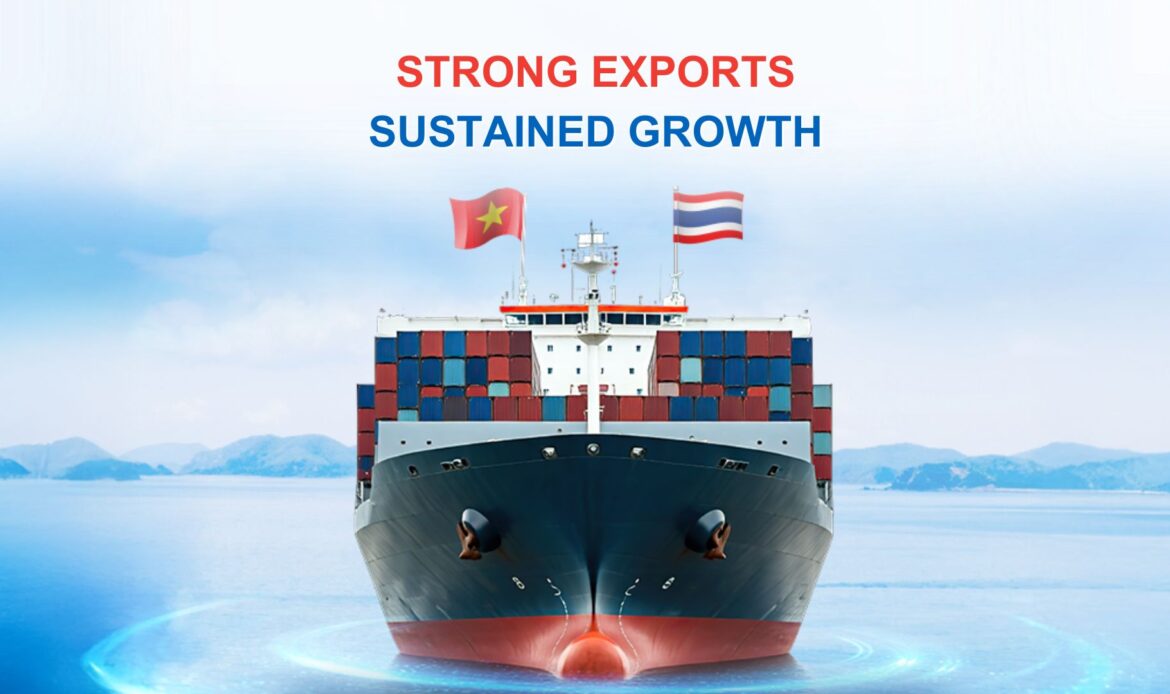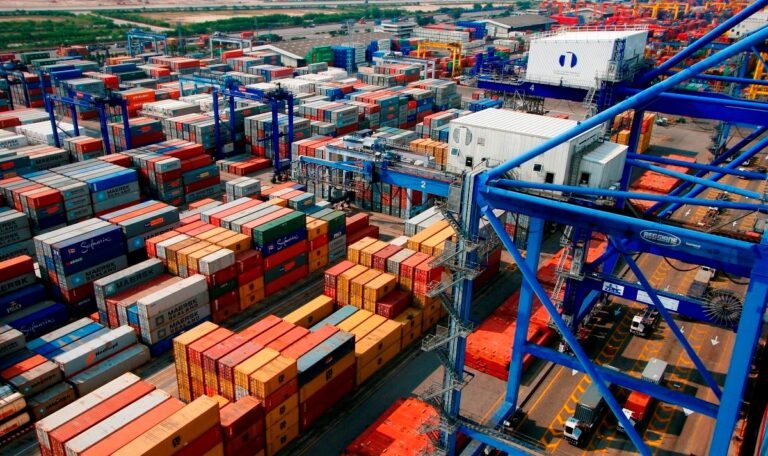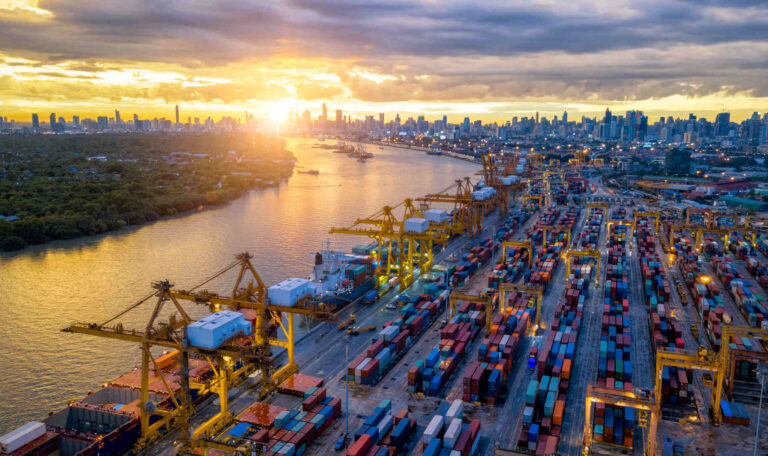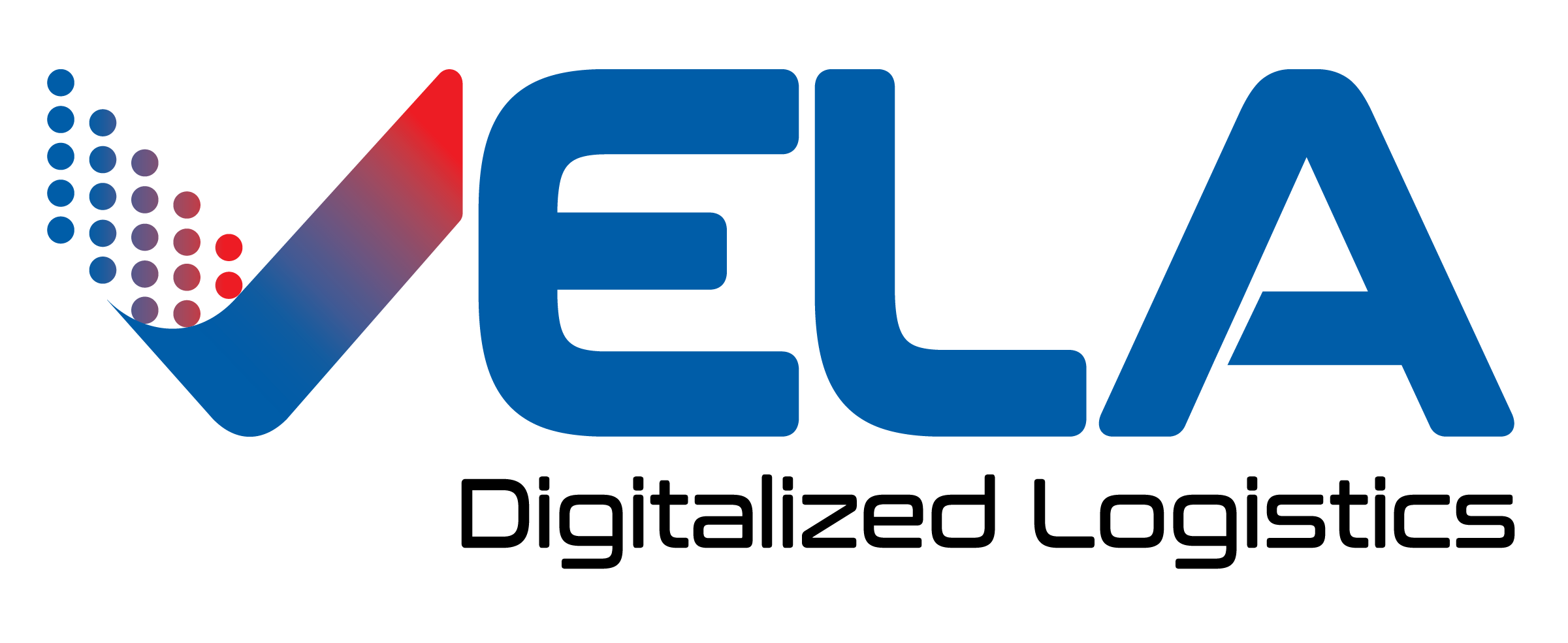Accelerating the process of exporting goods to Thailand

Exporting goods to Thailand presents an attractive business opportunity for Vietnamese companies. To take full advantage of this potential, businesses must master the Logistics process to ensure that goods are delivered to customers on time.
Thailand’s growing demand for Vietnamese goods
In recent years, Thailand has consistently maintained strong demand for imports from Vietnam. This is clearly reflected in Vietnam’s export turnover to Thailand, which reached $6.5 billion in the first 10 months of 2024 (data from the General Department of Customs), a 5.1% increase compared to the same period in 2023.This positive trend highlights Vietnam’s solid position in Thailand’s supply chain, not only in terms of quantity but also in quality.
Key Vietnamese exports to Thailand include agricultural products, seafood, machinery, equipment, and electronics. Among these, agricultural products like shrimp, coffee, mangoes, and durians are increasingly becoming favorites among Thai consumers.

What should businesses do to expand exporting goods to Thailand?
Thailand is a promising export market, but competition within the ASEAN region is fierce. To attract Thai consumers and partners, businesses must enhance product quality. This includes meeting international standards and developing products aligned with current consumer trends, such as green, sustainable, and organic goods.
Moreover, participating in trade promotion events and exhibitions offers invaluable opportunities for Vietnamese businesses to connect with potential partners and customers in Thailand. These platforms allow businesses to showcase their products, stay informed about consumer trends, and gain deeper insights into market requirements.
Additionally, businesses should stay updated on Thailand’s trade policies and import regulations. Collaborating closely with government agencies or the Vietnam Import-Export Association can help businesses navigate changes in trade conditions and address challenges related to exporting agricultural products, food, and other consumer goods.
The detailed process of exporting goods to Thailand
Exporting goods to Thailand requires businesses to fully understand the legal procedures and customs regulations of both countries. Below is a step-by-step guide to the export process that businesses should follow.
Step 1: Prepare goods and sign contracts
Businesses must ensure their goods meet all packaging and labeling standards. Additionally, signing a sales contract with Thai partners is essential to clearly define the terms and responsibilities of each party.
Step 2: Obtain an export license (if required)
If this is the first time your business is exporting goods to Thailand, obtaining an export license is mandatory. However, for businesses with prior export experience, this step may be skipped.
Step 3: Choose transportation methods and sign contracts
Depending on the characteristics of the goods and contractual requirements, businesses should select the most suitable transportation method, such as road, sea, or air freight. Furthermore, signing a transportation contract with a reliable service provider ensures the safety and efficiency of the shipment.
Step 4: Purchase cargo insurance
Businesses should purchase cargo insurance to minimize risks of loss or damage during transit.
Step 5: Complete export customs procedures
Prepare the following customs documents:
- Business registration license.
- Sales contract.
- Commercial invoice.
- Packing list.
- Bill of lading or other transport documents.
Then, proceed with customs declarations through the VNACCS system. The system will process and notify the customs clearance results for the shipment.
Step 6: Pay taxes and customs fees
Businesses must pay applicable taxes and customs fees as per the current regulations to ensure the shipment is cleared for export.
Step 7: Transport goods to Thailand
After completing export customs procedures, the goods will be transported to Thailand using the agreed method. Businesses should closely monitor the shipment to ensure it arrives safely and on schedule.
Step 8: Complete import procedures in Thailand
Once the goods arrive, customers or partners in Thailand will handle import procedures, including customs declarations and payment of applicable taxes under Thai regulations.

Exporting goods to Thailand successfully requires partnering with a reliable Logistics provider. VELA is proud to be a professional Logistics partner, offering customs services and transportation solutions to Thailand at reasonable costs.
VELA guarantees on-time delivery and the highest product quality. With advanced technology, VELA enables businesses to monitor and supervise the entire transportation process, ensuring transparency and maximum efficiency.
Exporting goods to Thailand offers significant revenue growth potential for businesses. To fully seize this opportunity, businesses must prepare comprehensive documentation and accurately follow customs procedures. This ensures smooth clearance, strengthens competitive positioning, and effectively expands market reach.
